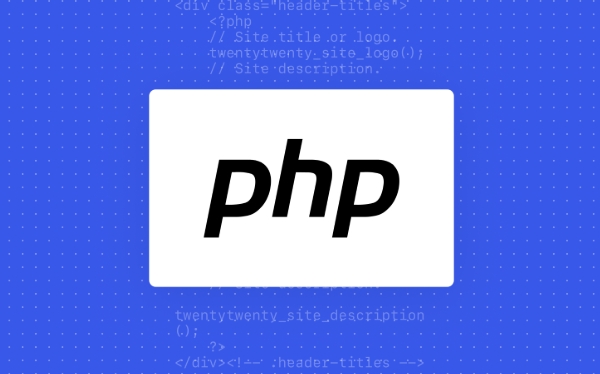A Guide to Modifying Arrays of Objects in PHP
Aug 04, 2025 am 12:38 AMArrays of objects in PHP contain class instances, allowing direct property or method-based modifications; 2. Update properties using foreach loops since objects are passed by reference, or use setters for encapsulated properties; 3. Filter objects with array_filter() to create subsets based on conditions without altering the original array; 4. Sort arrays using usort() with a comparison function on object properties, noting it modifies the original unless a copy is used; 5. Transform data via array_map(), extracting values or modifying objects, though keys may require reindexing with array_values(); 6. Search for objects using a loop for the first match or array_filter() for multiple results, then retrieve the first element if needed; 7. Add objects with [] or array_push(), remove by key using unset() followed by array_values() to reindex, or filter out based on conditions; 8. Avoid pitfalls by checking property existence, reindexing after removal, and cloning objects with clone to prevent unintended side effects, ensuring safe and predictable manipulation of object arrays.

Modifying arrays of objects in PHP is a common task when working with data from databases, APIs, or structured application logic. Whether you're filtering, updating, sorting, or transforming object collections, understanding the right techniques ensures clean, efficient code.

Here’s a practical guide to help you confidently manipulate arrays of objects in PHP.
1. Understanding Arrays of Objects
In PHP, an array of objects is simply an array where each element is an instance of a class. For example:

class User {
public $name;
public $age;
public $active;
public function __construct($name, $age, $active = true) {
$this->name = $name;
$this->age = $age;
$this->active = $active;
}
}
$users = [
new User("Alice", 30),
new User("Bob", 25, false),
new User("Charlie", 35)
];Now $users is an array of User objects. You can modify this array in various ways.
2. Updating Object Properties
You can loop through the array and modify object properties directly since objects are passed by reference.

foreach ($users as $user) {
if ($user->age < 30) {
$user->category = 'young';
} else {
$user->category = 'adult';
}
}Now each user has a new category property. Note: PHP allows dynamic property assignment unless the class uses __set() restrictions.
If you're using a class with private/protected properties and setters, call the appropriate method:
$user->setActive(true);
3. Filtering Objects
Use array_filter() to create a new array containing only objects that match a condition.
// Get only active users
$activeUsers = array_filter($users, function($user) {
return $user->active;
});
// Get users over 30
$olderUsers = array_filter($users, function($user) {
return $user->age > 30;
});The original array remains unchanged unless you reassign it.
4. Sorting Objects
Use usort() to sort the array based on object properties.
// Sort users by age (ascending)
usort($users, function($a, $b) {
return $a->age <=> $b->age;
});
// Sort by name (alphabetically)
usort($users, function($a, $b) {
return strcmp($a->name, $b->name);
});usort() modifies the original array. Use sorted = $users and sort the copy if you want to preserve order.
5. Transforming Objects (Map Pattern)
PHP doesn’t have a native array_map equivalent for objects that preserves object types, but you can still transform data.
// Extract names into a simple array
$names = array_map(function($user) {
return $user->name;
}, $users);
// Or modify and return new objects
$updatedUsers = array_map(function($user) {
$user->name = strtoupper($user->name);
return $user; // returning same object (modified)
}, $users);Be careful: array_map() doesn't preserve keys unless you reindex or use array_values().
6. Searching for Objects
Use array_filter() for multiple matches or a loop for the first match.
// Find first user named Alice
$found = null;
foreach ($users as $user) {
if ($user->name === 'Alice') {
$found = $user;
break;
}
}Or use array_filter() and grab the first result:
$matches = array_filter($users, fn($u) => $u->name === 'Alice'); $found = !empty($matches) ? array_values($matches)[0] : null;
7. Adding or Removing Objects
- Add an object using
[]orarray_push():
$users[] = new User("Diana", 28);
// or
array_push($users, new User("Eve", 32));- Remove by key (if known):
unset($users[0]); // removes first element $users = array_values($users); // reindex array
- Remove by condition:
$users = array_filter($users, function($user) {
return $user->age <= 100; // example: remove users over 100
});Remember: array_filter() returns a new array, so reassign to update.
8. Avoid Common Pitfalls
- Objects are passed by reference: Modifying an object inside a loop affects the original.
- Use
array_values()afterunset()orarray_filter()if you need clean numeric keys. - Don’t assume properties exist — check with
isset()or in class definition. - Immutable patterns: If you want to avoid side effects, clone objects:
$clonedUsers = array_map(fn($user) => clone $user, $users);
Now modifications to $clonedUsers won’t affect the original.
Modifying arrays of objects in PHP comes down to combining array functions with object-oriented access. Use loops for direct changes, array_filter, usort, and array_map for transformations, and always consider whether you’re working with references or copies.
Basically, once you’re comfortable mixing array operations with object property access, these tasks become straightforward and powerful.
The above is the detailed content of A Guide to Modifying Arrays of Objects in PHP. For more information, please follow other related articles on the PHP Chinese website!

Hot AI Tools

Undress AI Tool
Undress images for free

Undresser.AI Undress
AI-powered app for creating realistic nude photos

AI Clothes Remover
Online AI tool for removing clothes from photos.

Clothoff.io
AI clothes remover

Video Face Swap
Swap faces in any video effortlessly with our completely free AI face swap tool!

Hot Article

Hot Tools

Notepad++7.3.1
Easy-to-use and free code editor

SublimeText3 Chinese version
Chinese version, very easy to use

Zend Studio 13.0.1
Powerful PHP integrated development environment

Dreamweaver CS6
Visual web development tools

SublimeText3 Mac version
God-level code editing software (SublimeText3)
 PHP Variable Scope Explained
Jul 17, 2025 am 04:16 AM
PHP Variable Scope Explained
Jul 17, 2025 am 04:16 AM
Common problems and solutions for PHP variable scope include: 1. The global variable cannot be accessed within the function, and it needs to be passed in using the global keyword or parameter; 2. The static variable is declared with static, and it is only initialized once and the value is maintained between multiple calls; 3. Hyperglobal variables such as $_GET and $_POST can be used directly in any scope, but you need to pay attention to safe filtering; 4. Anonymous functions need to introduce parent scope variables through the use keyword, and when modifying external variables, you need to pass a reference. Mastering these rules can help avoid errors and improve code stability.
 How to handle File Uploads securely in PHP?
Jul 08, 2025 am 02:37 AM
How to handle File Uploads securely in PHP?
Jul 08, 2025 am 02:37 AM
To safely handle PHP file uploads, you need to verify the source and type, control the file name and path, set server restrictions, and process media files twice. 1. Verify the upload source to prevent CSRF through token and detect the real MIME type through finfo_file using whitelist control; 2. Rename the file to a random string and determine the extension to store it in a non-Web directory according to the detection type; 3. PHP configuration limits the upload size and temporary directory Nginx/Apache prohibits access to the upload directory; 4. The GD library resaves the pictures to clear potential malicious data.
 Commenting Out Code in PHP
Jul 18, 2025 am 04:57 AM
Commenting Out Code in PHP
Jul 18, 2025 am 04:57 AM
There are three common methods for PHP comment code: 1. Use // or # to block one line of code, and it is recommended to use //; 2. Use /.../ to wrap code blocks with multiple lines, which cannot be nested but can be crossed; 3. Combination skills comments such as using /if(){}/ to control logic blocks, or to improve efficiency with editor shortcut keys, you should pay attention to closing symbols and avoid nesting when using them.
 How Do Generators Work in PHP?
Jul 11, 2025 am 03:12 AM
How Do Generators Work in PHP?
Jul 11, 2025 am 03:12 AM
AgeneratorinPHPisamemory-efficientwaytoiterateoverlargedatasetsbyyieldingvaluesoneatatimeinsteadofreturningthemallatonce.1.Generatorsusetheyieldkeywordtoproducevaluesondemand,reducingmemoryusage.2.Theyareusefulforhandlingbigloops,readinglargefiles,or
 Tips for Writing PHP Comments
Jul 18, 2025 am 04:51 AM
Tips for Writing PHP Comments
Jul 18, 2025 am 04:51 AM
The key to writing PHP comments is to clarify the purpose and specifications. Comments should explain "why" rather than "what was done", avoiding redundancy or too simplicity. 1. Use a unified format, such as docblock (/*/) for class and method descriptions to improve readability and tool compatibility; 2. Emphasize the reasons behind the logic, such as why JS jumps need to be output manually; 3. Add an overview description before complex code, describe the process in steps, and help understand the overall idea; 4. Use TODO and FIXME rationally to mark to-do items and problems to facilitate subsequent tracking and collaboration. Good annotations can reduce communication costs and improve code maintenance efficiency.
 Quick PHP Installation Tutorial
Jul 18, 2025 am 04:52 AM
Quick PHP Installation Tutorial
Jul 18, 2025 am 04:52 AM
ToinstallPHPquickly,useXAMPPonWindowsorHomebrewonmacOS.1.OnWindows,downloadandinstallXAMPP,selectcomponents,startApache,andplacefilesinhtdocs.2.Alternatively,manuallyinstallPHPfromphp.netandsetupaserverlikeApache.3.OnmacOS,installHomebrew,thenrun'bre
 How to access a character in a string by index in PHP
Jul 12, 2025 am 03:15 AM
How to access a character in a string by index in PHP
Jul 12, 2025 am 03:15 AM
In PHP, you can use square brackets or curly braces to obtain string specific index characters, but square brackets are recommended; the index starts from 0, and the access outside the range returns a null value and cannot be assigned a value; mb_substr is required to handle multi-byte characters. For example: $str="hello";echo$str[0]; output h; and Chinese characters such as mb_substr($str,1,1) need to obtain the correct result; in actual applications, the length of the string should be checked before looping, dynamic strings need to be verified for validity, and multilingual projects recommend using multi-byte security functions uniformly.
 Learning PHP: A Beginner's Guide
Jul 18, 2025 am 04:54 AM
Learning PHP: A Beginner's Guide
Jul 18, 2025 am 04:54 AM
TolearnPHPeffectively,startbysettingupalocalserverenvironmentusingtoolslikeXAMPPandacodeeditorlikeVSCode.1)InstallXAMPPforApache,MySQL,andPHP.2)Useacodeeditorforsyntaxsupport.3)TestyoursetupwithasimplePHPfile.Next,learnPHPbasicsincludingvariables,ech






